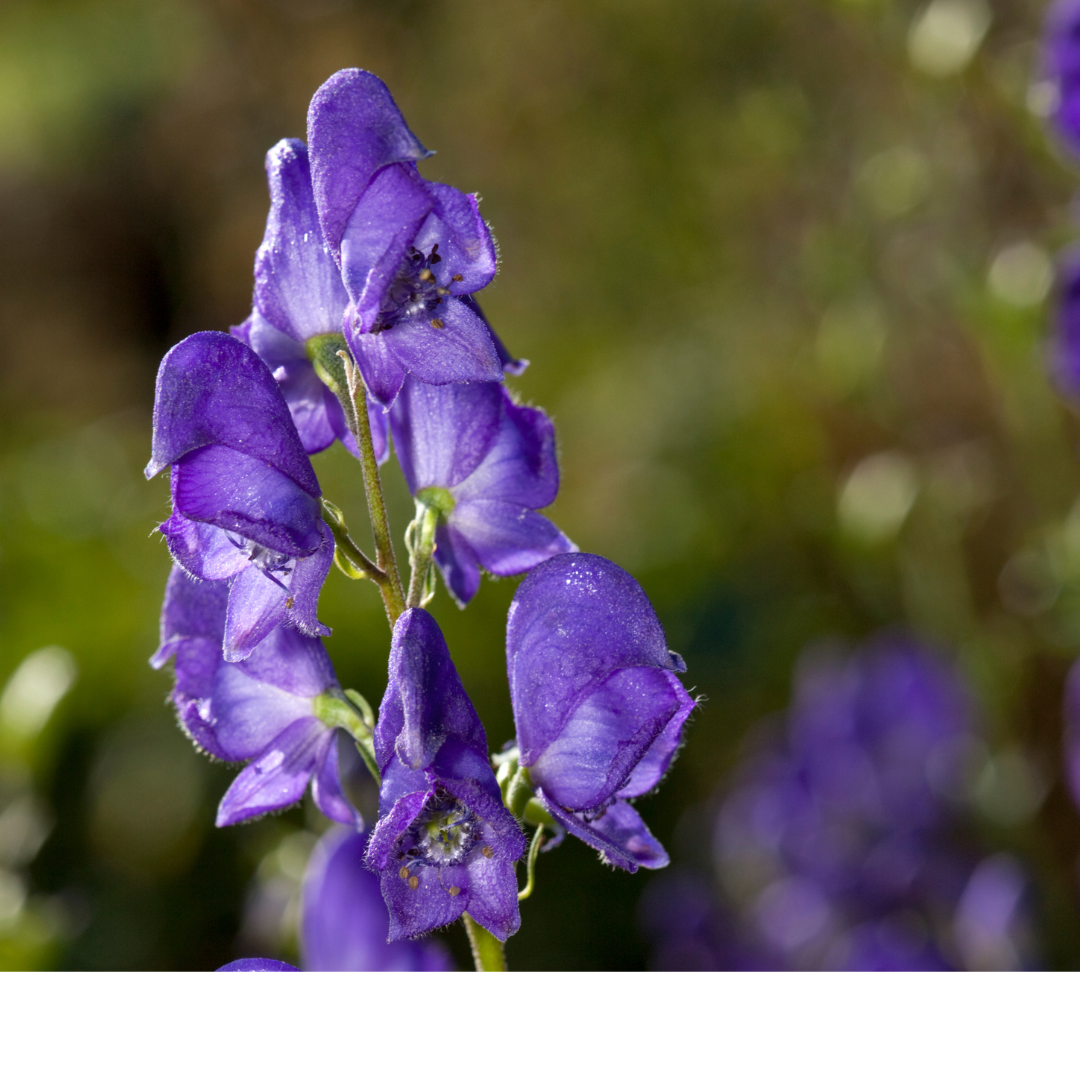”In a damp ditch that was very very wet thanks to run off from a local reservoir I spotted Wolfsbane this week.
GeorgeFlavour Fred
The reason is that this is a plant that is dangerous to the touch given its although its poisonous compound would do far more harm if derived from the roots/seeds ingested or delivered by a dipped arrow or javelin.
Historically used this way to kill wolves, panthers in the 18th century with the poison as well as referenced in much folklore (killing werewolves), in Shakespeare’s Hamlet, Game of Thrones, and a PC fantasy game of the same name from the mid-90’s. It’s an award winning beautiful plant with a dark side that intrigues me.
“A howl echoes in the distance, we a see a person transform into a gigantic wolf. It approaches, snarling, towards a small, terrified group of humans. One person dares to approach , brandishing a small purple flower, when the flower comes into contact with the wolf’s fur they let out a shriek of pain.“
The Acontium genus has 250 species most often in moist soils but with significant run off like this spot and also well drained mountain meadows. Most of this species are very poisonous and should be handled very carefully. This particular variety (Aconitum napellus) was just forming the beautiful blue/purple flowers soon to form the “hood” from which its other name “Monkshood”. Clearly showing its palmately deep green lobed angular leaves straight stem with fine hairs getting close 1.5 meters although it’ll get over 2 meters.
Those wolves were the apex predators…
Aconitine works by opening up sodium channels that are already sensitive to tetrodotoxins (potent neurotoxin found in pufferfish and others in Tetraodontiformes), that increases the influx of sodium through the channels and delays re polarization, causing the victim to become easily excited and more vulnerable to heart failure (Roberts and Wink 1999). The poison further paralyzes the nerves, lowers blood pressure, then gradually stops the heart (Stewart 2009).
In the Dark Ages, wolfsbane was said to be used by witches in spells and potions and was one of several ingredients for an ointment that, when applied to a broom, could facilitate flight. Stories also proclaimed that a sorceress who carried wolfsbane seeds wrapped in lizard skin could become invisible and witches who applied the poisonous sap to their flints and launched them at unsuspecting enemies.


